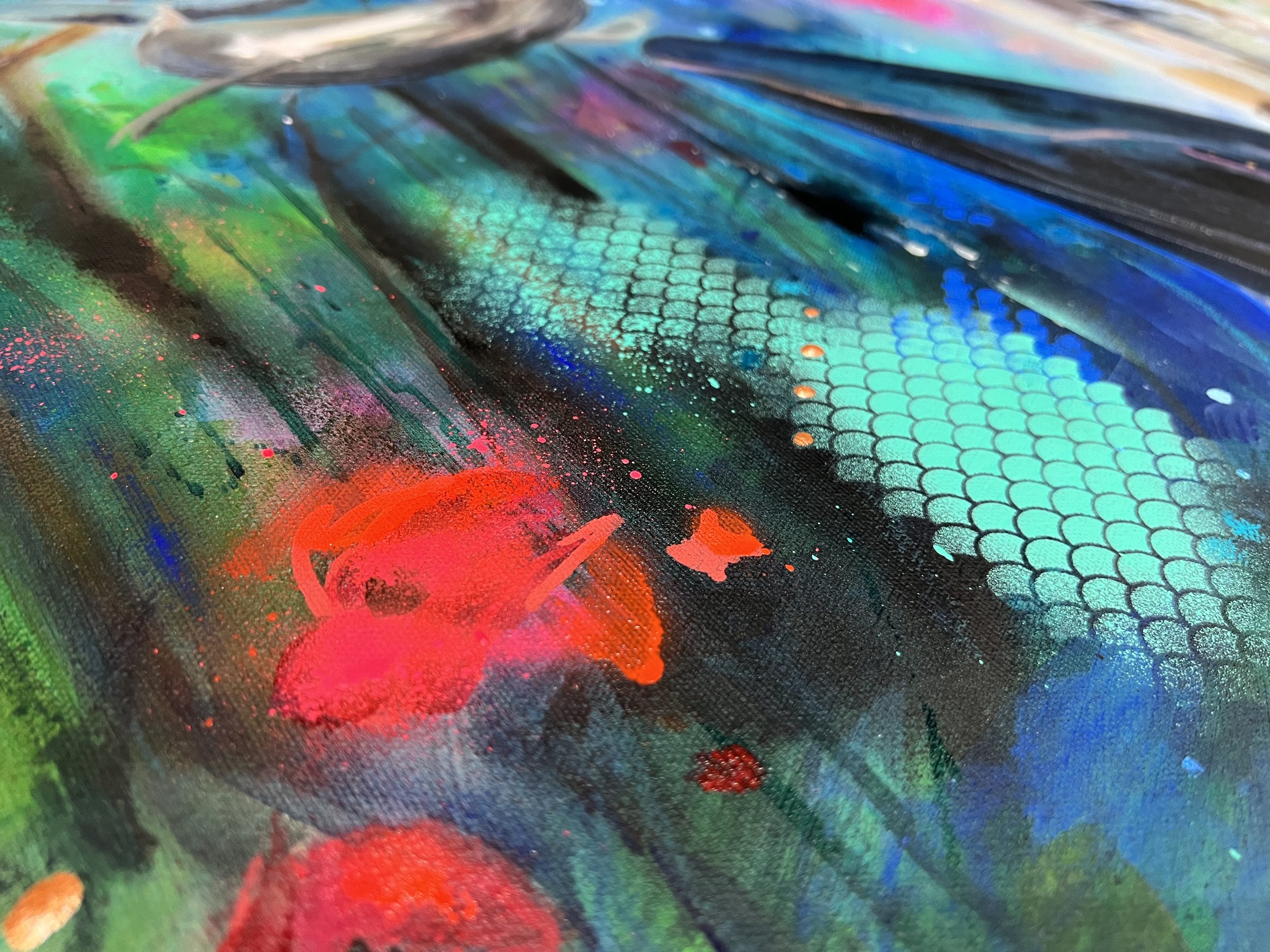Artist Blog #5
Varnishing your piece of painted art is crucial in the longevity of your creation.
Hi everyone, welcome back.
Here I will explain what exactly varnish is, what types of varnish are available, when to varnish, how to varnish and I will also tell you what products I personally use and recommend.
So What is Varnish?
- Varnish is a clear layer applied to a fully dried piece of work,
- Varnishes for oil paintings are made from a resin suspended in a solvent,
- Varnishes for acrylic paintings are made from acrylic polymer emulsions.
The Types of Varnish
- Varnish comes in glossy, matt and satin. It is down to your own preference what finish you want to achieve. You may want to experiment with all three to see which one works for you and your artwork,
- You could mix two together to create a specific finish.
Why Varnish?
- It prevents the painting from dust particles, UV rays, normal wear and tear and the colours are less likely to fade over time,
- It gives a more unified finish to the various areas of the painting,
- It allows the painting to be more easily cleaned,
- It increases the colour saturation and the colours look more rich and beautiful,
- It deepens the colour contrasts,
- Moisture cannot get to your painting.
How to Varnish?
- Use a flat, wide and soft brush or flat sponge,
- Use sweeping strokes across the painting going from one side to the next to ensure you are covering the whole painting evenly,
- Do not keep brushing over the same area,
- Put some light onto the painting so you can see any areas you may have missed,
- Choose a dust free area when varnishing and keep windows and doors closed to prevent children, pets and anything else coming into contact with the varnished painting,
- use the brush or sponge for varnishing only otherwise if you’re painting with it as well there will be a chance that old paint pigments may come off in the varnishing process and stick to the painting,
- keep the work on a flat surface whilst varnishing and drying,
- Remove any bubbles,
- Apply 1-3 coats,
- Drying times for varnish is usually 18 to 24 hours. Always look at the manufacturers guidelines,
- With each layer apply it by going across at a right angle. This will help even all layers out,
- Wipe the painting with a lint free cloth beforehand to get rid of dust,
- Place something underneath the canvas at the cross section of the stretcher bars or at the under the corners of the inside of the frame to raise it from the flat surface so the varnish from the sides cannot stick to anything as it dries,
- Pour out some varnish in a shallow and clean dish,
- If your painting has areas of heavy texture, then I’d recommend using a spray varnish instead. If you were to use a liquid varnish then it will create pools of varnish in the textured areas,
- If you use a matt varnish and it’s not properly mixed beforehand then it can leave a milky white finish to your painting and is particularly noticeable over black areas,
- Leave the painting flat until the varnish is dry to the touch. Once it is touch dry you can lean it against the wall with the painted side downwards facing the wall so as to prevent dust particles from settling into the varnish while it proceeds to dry.
When to Varnish?
- Varnish once you have photographed your artwork for social media, your website and for prints. This is very important because once it is varnished the painting will become reflective and it will be very difficult to get a good image of your painting due to the reflective glare,
- Ensure your painting is fully dry before you begin to varnish. The drying times depends on whether you’ve used acrylic or oil paints, he thickness of paint plus the humidity of the environment,
- The longest time it can take to dry is up to a month with acrylic paints and years with oils. Now this is worse case and it depends on the previous points that I mentioned,
- For me, I leave my acrylic paintings at least 2 weeks before varnishing and probably the same amount of time for my oil paintings too. I can do this because I use Gamblin Galkyd medium mixed in with my oil paints which speeds up the drying time immensely and I do not use impasto like layers with my paint. The manufacturers say that oil paint, when using Galkyd, dries within 1-2 days if the layers are not thick.
Recommended Varnish
I recommend Gamblin Gamvar Gloss varnish which you can use on both acrylic and oil paintings.
To purchase any of the materials I use for your own beautiful creations then click here
Click on the button below to watch my artist vlog #5.
It shows my painting process of painting 13 of my art portfolio, what has inspired me this week and information on varnishing your painting in video format.


